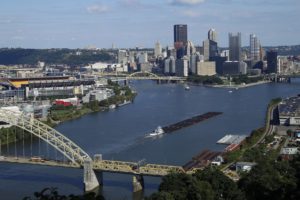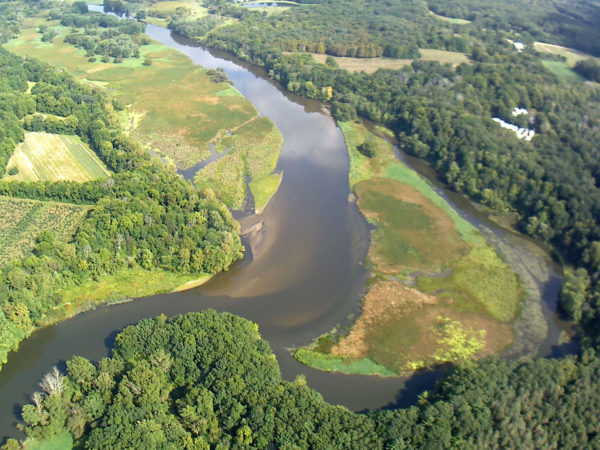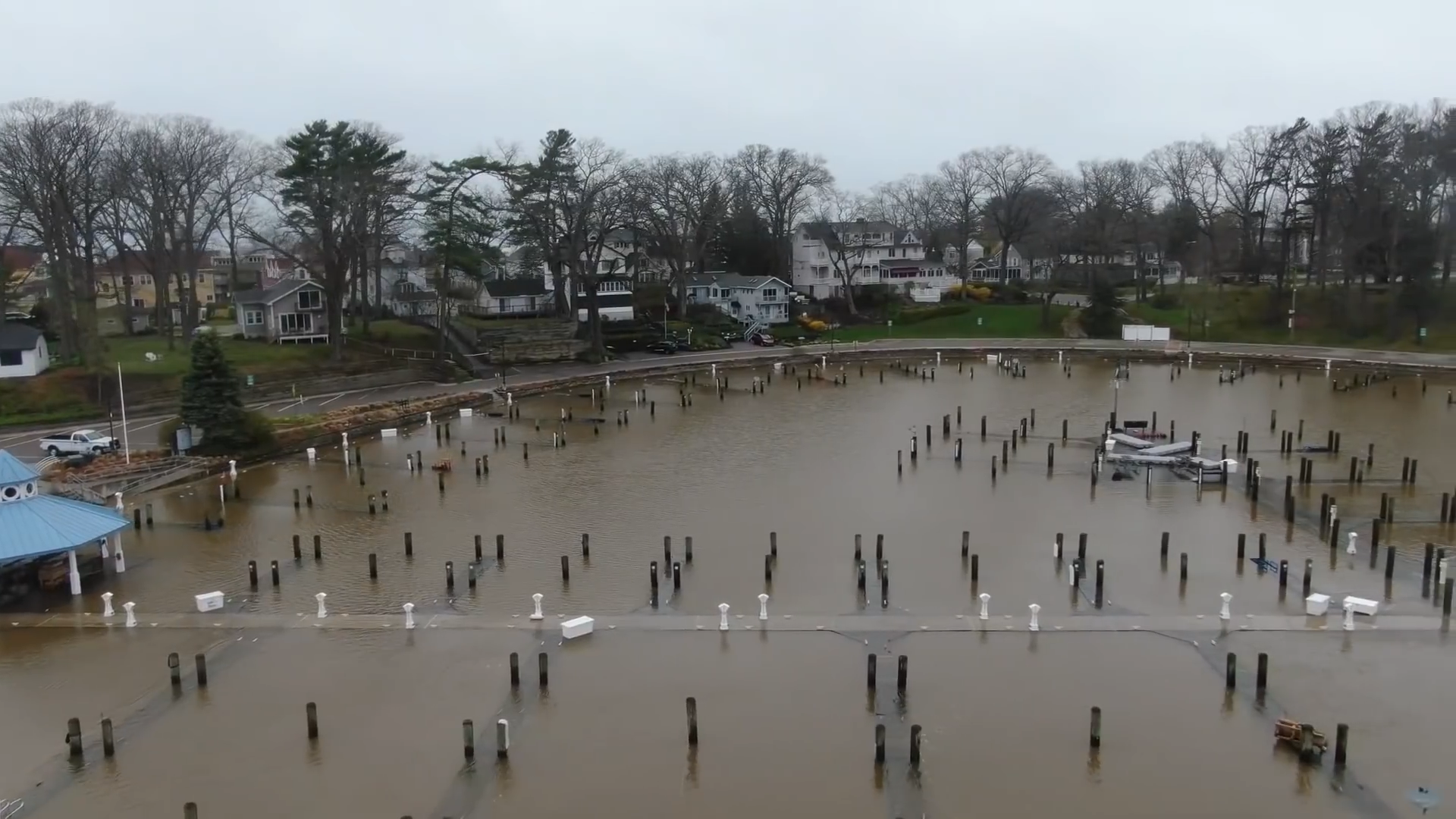
President Joe Biden last week announced a massive $2 trillion infrastructure proposal, including how the money will be spent and plans to pay for it.
He spoke Wednesday at the training facility for the United Brotherhood of Carpenters and Joiners of America in Pittsburgh, Pennsylvania, where he began his presidential campaign two years ago.
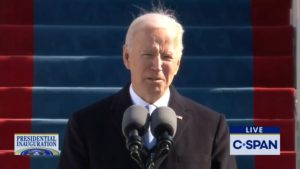
President Joe Biden during his inaugural speech on Jan. 20, 2021. (Image from CSPAN)
“It’s a once-in-a-generation investment in America, unlike anything we’ve seen or done since we built the interstate highway system and the space race decades ago,” Biden said in his speech.
An NPR piece laid out the numbers of the plan for easy analysis, showing the planned breakdown of funding for transportation, housing, water, workforce and more.
What it all means exactly for the Great Lakes region and drinking water-related infrastructure is still in question – the plan has to go through Congress first.
But already some promises from the plan stick out. In Biden’s American Jobs Plan, $45 billion will go to removing all lead pipes and service lines; $10 billion to PFAS remediation and wastewater system investment; and $17 billion to investing in ports and inland waterways.
Great Lakes Now reached out to a variety of regional leaders for this collection of perspectives.
Maya MacGuineas, president of the nonprofit Committee for a Responsible Federal Budget:
It is both notable and admirable that the Biden Administration supports fully paying for their infrastructure package. That is an important marker of fiscal responsibility – new initiatives, including temporary ones, should be fully offset. Considering the strong pace of vaccination, expectations of a robust economic recovery, and massive amounts of money still in the recovery pipeline, at this time there is no further justification for additional borrowing.
Congress should heed the President’s call to fully offset all new spending and tax cuts. If they do not like the specific proposals included in President Biden’s plan, they should offer alternative tax increases and/or spending cuts, or reduce the size of the package to what they are willing to pay for.
In light of a record high, growing, and unsustainable debt, this infrastructure spending package should be paid for over a shorter time period than the 15 years they propose. It is critical that new spending in the plan be credibly temporary, especially considering the unusually long window for offsets, and that dollars be spent effectively on true and worthwhile one-time investments.
Amanda Woodrum, senior researcher with nonprofit Policy Matters Ohio:
The fact that he chose Pittsburgh to unveil his American Jobs Plan makes clear that he sees this plan as a boon for our region. Biden’s plan
Downtown Pittsburgh as seen from the West End Overlook. (Photo by Ryan Loew/PublicSource)
is exciting, and we see the enormous overlap with our vision for the region—both for the much needed infrastructure investments we’ve long been calling for in our region, as well as the values of creating good union jobs and ensuring that workers and communities left out in the past share in the new prosperity.
How this work gets done also matters—to ensure we maximize benefits for the region, lay the foundation for a stronger economy going forward, make sure the next generation of manufacturing takes place here in the U.S. and our region, grow good union jobs, and build a more diverse workforce going forward. Over the next few months, as Congress debates the American Jobs Plan, we will focus on making sure our region gets its fair share of much needed investments.
Nick Schroeck, associate professor of law and director of the Environmental Law Clinic with the University of Detroit Mercy School of Law:
From an environmental and quality of life perspective there is a lot to like about this plan.
The water infrastructure investments are critical – removing lead service lines and modernizing treatment systems will protect public health and assist with the water affordability problems in many of our communities.
As for legal issues, with any major transportation projects there are a series of environmental reviews and required permits. Changing road design, or adding railways, will require environmental review, public engagement, and coordination with state and local authorities. Similarly with affordable housing and water infrastructure, zoning decisions will be required at the local level and water utilities will need local approval for lead pipe removal and state permits for any changes to drinking water treatment plants or wastewater treatment plants.
One larger point: we have neglected infrastructure in this country for far too long. Our current roads, transit systems, and water infrastructure are all in poor shape. Infrastructure is critical for a well-functioning society, economy and environment. It all costs money, but I see infrastructure as an investment in a better quality of life for today and for future generations – just like major infrastructure investments in the 1930s and 1950s continue to benefit us today, long after they have been paid off.
Statement from U.S. Senator Tammy Duckworth (D-IL):
President Biden’s American Jobs Plan is the bold, forward-thinking proposal we need to tackle the challenges of our time. Not only does it create millions of good-paying jobs, rebuilds our crumbling infrastructure and better positions us to compete with China, but it moves our nation towards a better future. As Chair of the Subcommittee tasked with strengthening the Safe Drinking Water Act, I also commend President Biden’s proposal for addressing one of my top priorities: putting Americans to work replacing all lead service pipes so children and families across the country can drink water out of their taps without fear of suffering permanent, irreversible brain damage.
Statement from U.S. Senator Rob Portman (R-OH):
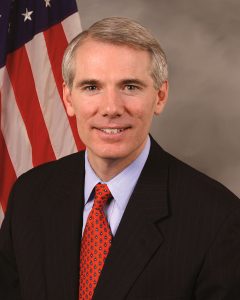
United States Senator Rob Portman of Ohio, courtesy of United States Senate
I support improving America’s aging roads, bridges, ports, and other infrastructure. And we can do so in a bipartisan way. Last Congress, the Senate Environment and Public Works Committee approved bipartisan infrastructure legislation by a vote of 21-0, but the hard work on how to pay for it remains. This bipartisan approach last Congress totaled $287 billion, yet the Biden plan introduced today costs more than $2 trillion. At its core, the president’s plan calls for a $620 billion investment in transportation infrastructure.
However, the total soars to $3 trillion with its inclusion of these broad policy priorities that are a far cry away from what we’ve ever defined as infrastructure. The Biden Administration’s plan redefines infrastructure to include hundreds of billions of dollars of spending on priorities like health care, workforce development, and research and development.
Statement from U.S. Senator Gary Peters (D-MI):

Senator Gary Peters on Great Lakes Now
In Michigan, we know that our crumbling roads, bridges, sewers and ports are in desperate need of upgrades.
Comprehensive infrastructure investments will not only create good-paying jobs and expand skills training and apprenticeship opportunities for Michiganders – but will also provide a much-needed boost to our economy and strengthen our competitiveness on a global stage.
I look forward to working with President Biden and his Administration as we work to build back better. Investments in infrastructure are investments in Michigan workers: whether it’s repairing our roads and bridges in a sustainable way to withstand the impacts of climate change – closing the digital divide and expanding access to broadband – supporting manufacturers, the majority of which are small businesses – or expanding electric vehicles, particularly for the federal fleet.


